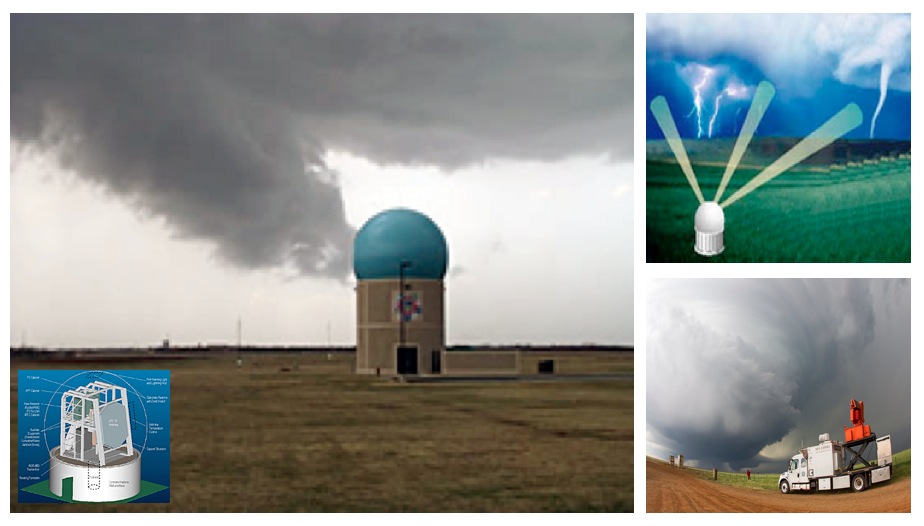| Description: | In a series of ASTRON-JIVE daily images, we take a look at the application of phased array antenna technology beyond radio astronomy. In this the second AJDI of the series, we focus on active phased array radar (PAR) systems used for weather and storm monitoring - these systems have been tested in the field over the last decade, evolving from arrays that have been used in military applications since the mid-1970s. A good example of systems now being tested around the world is the Multi-function Phased-Array Radar (MPAR) currently being developed by NOAA's National Severe Storms Laboratory's (NSSL) National Weather Radar Testbed (NWRT) group in Oklahoma, USA (see images above). Operating at S-band, a major advantage of the MPAR concept is the speed at which the entire sky can be scanned compared to conventional, singel-beam parabolic radar systems. In addition, there are the usual advantages of no moving parts - rotating radar systems have limited lifetimes and costly maintenance overheads in order to remain continually on the move. All this translates into lower cost systems and much faster response times for MPAR installations in terms of providing longer lead-times on severe weather warnings i.e. in the end it can really save lives. Further information on the characteristics of this system are available via Torres et al. 2011: http://cimms.ou.edu/~torres/Documents/AMS%20IIPS%202011.pdf and a good video on the topic can be found at: http://www.nssl.noaa.gov/news/video/mpar_symposium_07/
Mobile MPAR systems like the one shown in the image above (bottom right) are also being developed - this image shows the US Navy Postgraduate School's (NPS) X-band testbed system that is currently undergoing calibration exercises. Apart from the advantages mentioned earlier, flat phased array systems are clearly much more sturdy and durable, than exposed parabolic systems. The speed at with MPARs can scan an incoming storm is also permitting new research to be conducted on how large storms develop and dissipate, on both temporal and spatial scales that have hitherto been impossible to probe. That's constraining new theories of storm theory that will also help weather prediction in general. |

